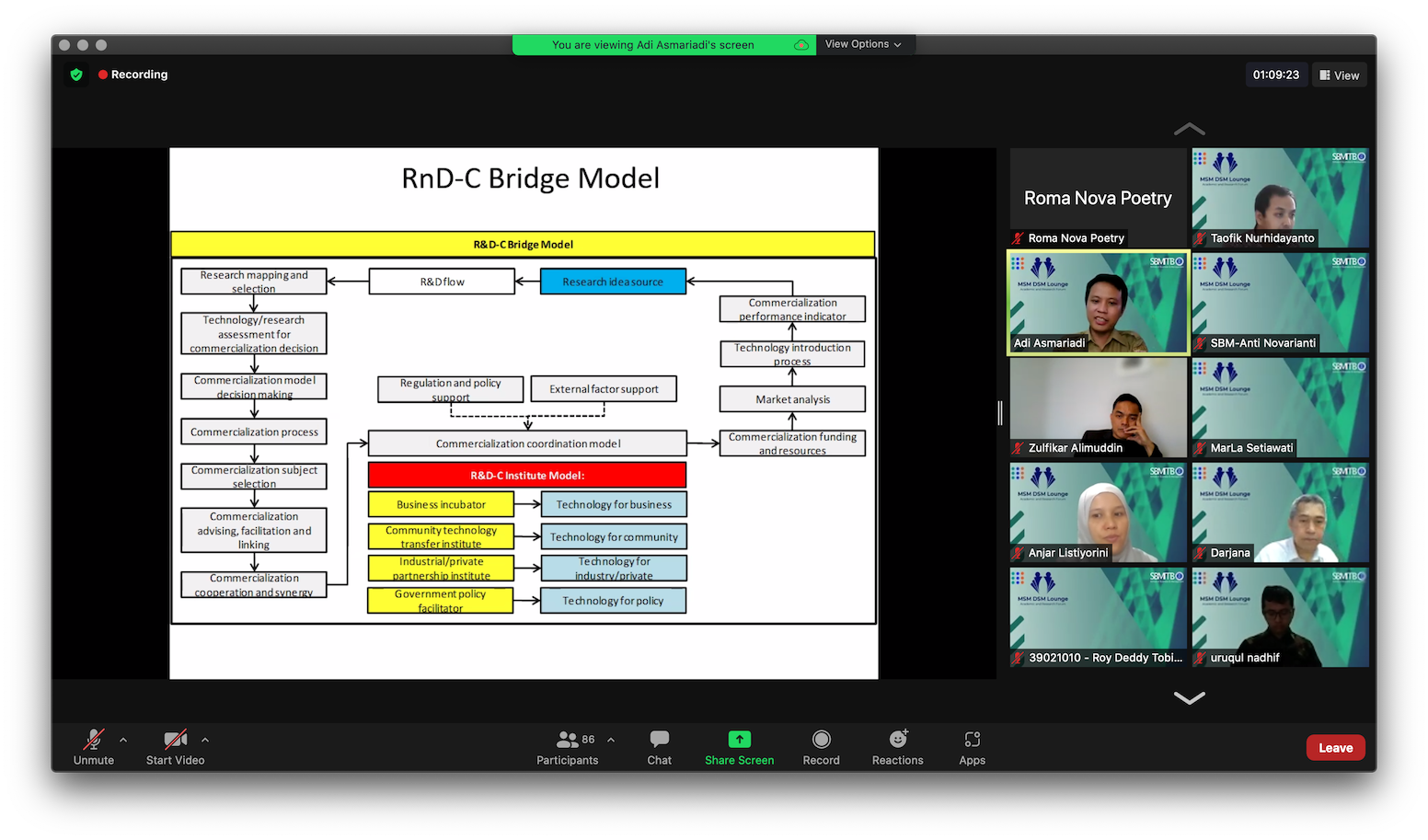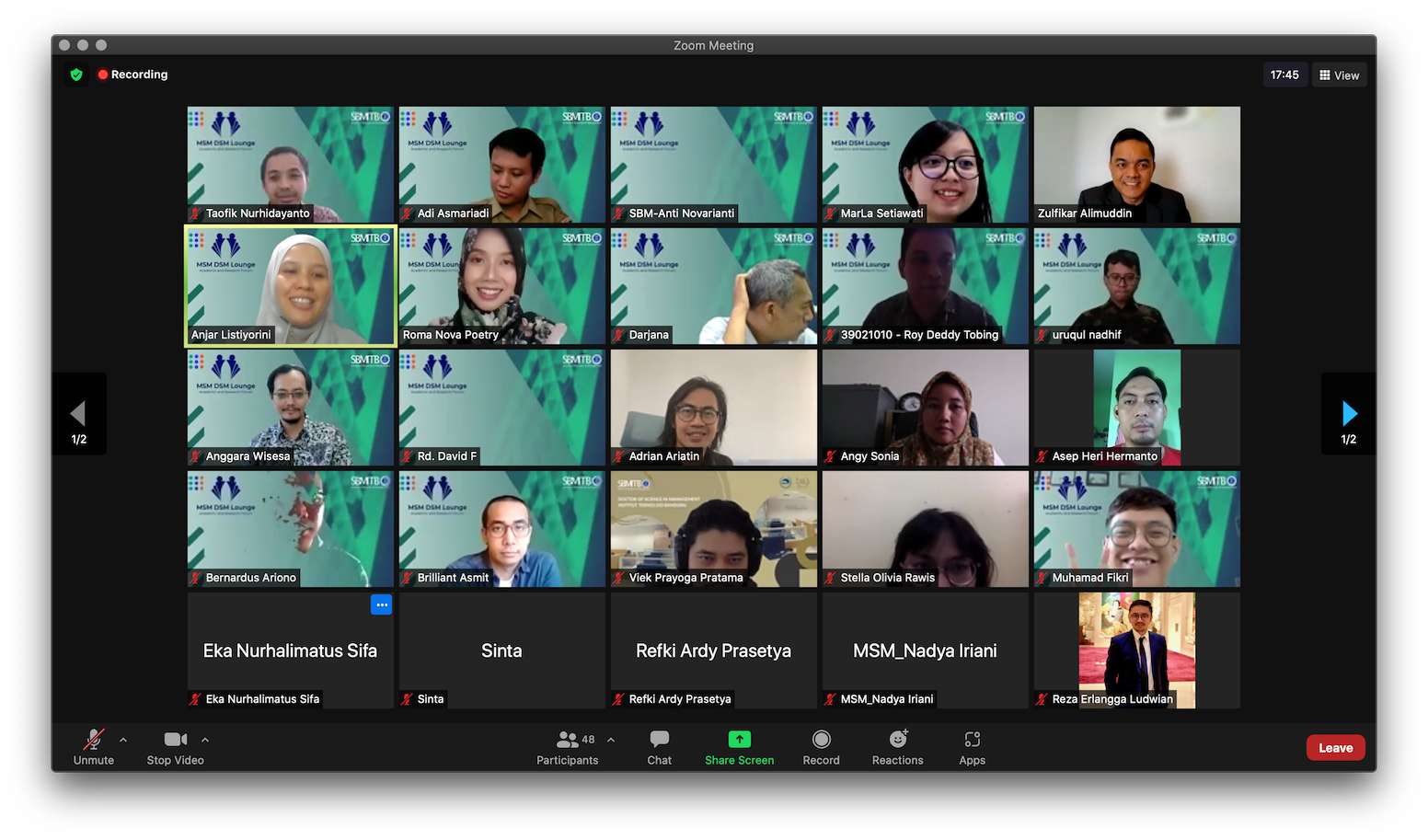The MSM-DSM SBM ITB Study Program held a dissemination seminar through the MSM DSM Lounge. With the theme “Knowledge Creation Through Escalation of Teaching and R&D,” this first series of knowledge dissemination featured two speakers: Dr. Zulfikar Alimuddin, the executive coach and director of the Higher Functioning Education Consulting Service (HAFECS), and Adi Asmaradi, MSM., a researcher at the Regional Research and Development Agency of Lampung Province.
 The seminar was opened with remarks from Dr. Anggara Wisesa, a study program representative. Researchers must utilize our studies and education and contribute to the betterment of society, industry, and the world.
The seminar was opened with remarks from Dr. Anggara Wisesa, a study program representative. Researchers must utilize our studies and education and contribute to the betterment of society, industry, and the world.
“Researchers shouldn’t just work in ivory towers,” said Dr. Anggara.
Dr. Zulfikar Alimuddin then opened his presentation. Dr. Zulfikar presented an extension of his dissertation that discusses the use of socialization, externalization, combination, internalization model (SECI) to increase teacher pedagogical content knowledge. He elaborated on how to strengthen SECI to be more impactful and which framework to use.
According to the SECI theory by Nonaka Takuchi, knowledge creation is about sharing knowledge between individuals, groups, or organizations. However, a more fundamental concept is the concept of knowledge creation in the 24 boxes model by Anderson Krathwol Taxonomy.
In addition, Dr. Zulfikar also said that there is a gap in the human mind so that if a person learns, what he learns does not have an impact on the pattern he works, which happens in the teacher. Sometimes, teachers have difficulties recognizing their shortcomings, and consequently, teachers are lacking in relating teaching materials to the teaching situation.
So, to escalate knowledge between teachers and students, there must be an engaging information exchange process so that teachers can measure the growth of students’ thinking, not only judging from the final results (exams). With Pedagogical Content Knowledge (PCK) and connecting the mind, topped with HOTS teaching methods, teachers can develop their minds and build students’ thinking structures.
 The second speaker, Adi Asmaradi, MSM., focused on research and development (R&D), especially in research commercialization and research-based policy development. Adi said there is still an unbridged process between research and commercialization.
The second speaker, Adi Asmaradi, MSM., focused on research and development (R&D), especially in research commercialization and research-based policy development. Adi said there is still an unbridged process between research and commercialization.
Adi came up with a model to bridge research and commercialization. First, research that can become a new business should be included in a business incubator to grow into a startup. Second, research that is promising for the industry should partner with respective industries needing such technology so that he two institutions will work hand in hand, with a pattern of commercialization of royalties or patents. Third, research related to community empowerment is carried out by transferring knowledge. Lastly, research about policies should be bridged to channel to the government.
One research that has been successfully commercialized is at LIPI Lampung, where they create durable pottery with mineral technology that they then develop through MSMEs. This is an example of a successful bridging process.





